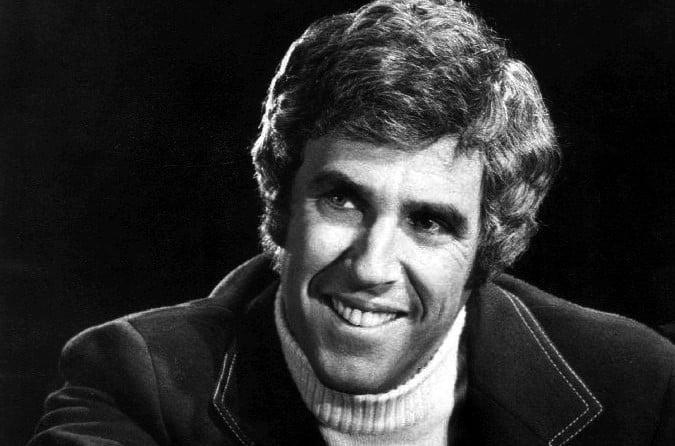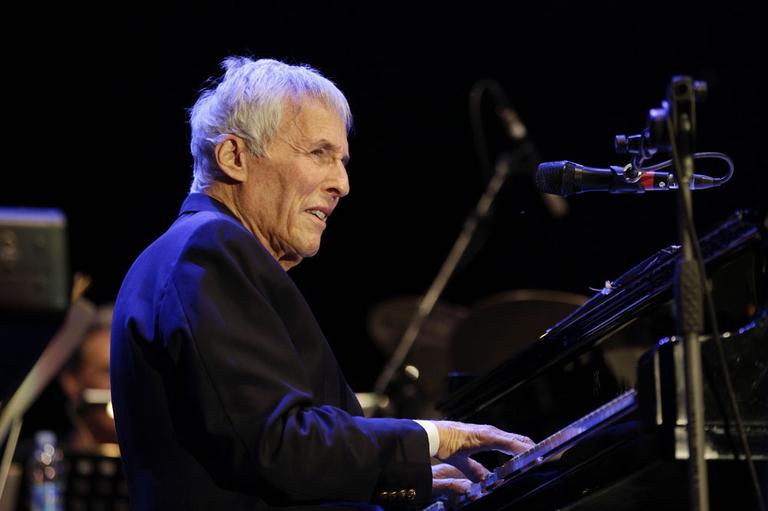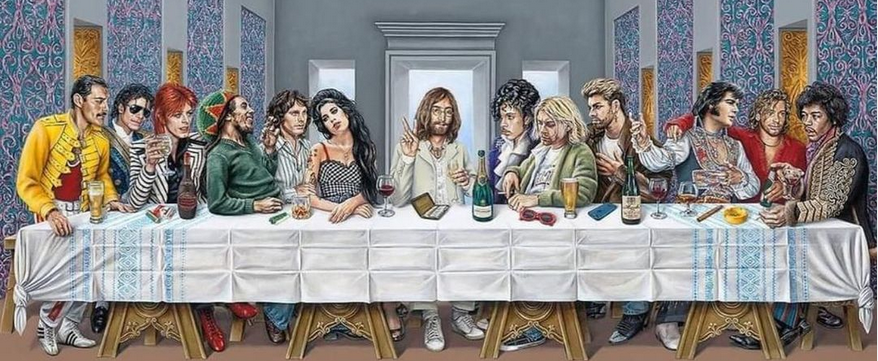
Burt Bacharach (May 12, 1928 – February 8, 2023) was an American musical legend, composer, songwriter, record producer, and pianist who composed hundreds of pop songs from the late 1950s through the 1980s, many in collaboration with lyricist Hal David.
Some of his most popular songs included:
Magic Moments - Perry Como
I Say A Little Prayer - Aretha FranklinWhat Do You Get When You Fall In Love - Dionne Warwick
The Look of Love - Dionne Warwick
Close To You - The Carpenters
Alfie - Dionne Warwick
Raindrops Keep Fallin' on My Head - BJ Thomas24 Hours From Tulsa - Gene Pitney
Make It Easy on Yourself - The Walker BrothersI Just Don't Know What to Do With Myself - Dusty Springfield
Alfie - Cilla BlackWhat's New, Pussycat? - Tom Jones
Arthur's Theme - Christopher Cross
Anyone Who Had A Heart - Dionne Warwick/Cilla Black..
Burt Freeman Bacharach was born in Kansas City, Missouri, and grew up in New York City, graduating from Forest Hills High School in 1946. He was the son of Irma M. (née Freeman) and Mark Bertram “Bert” Bacharach, a well-known syndicated newspaper columnist. Burt Bacharach’s mother was an amateur painter and songwriter who was responsible for making Burt learn piano during his childhood.
Burt Bacharach showed a keen interest in jazz as a teenager, disliking his classical piano lessons. He often used a fake ID to gain admission into 52nd Street nightclubs where he got to hear bebop musicians such as Dizzy Gillespie and Count Basie, whose style would later influence his songwriting.
Burt Bacharach studied music at Montreal’s McGill University, under Helmut Blume, at the Mannes School of Music, and at the Music Academy of the West in Montecito, California. During this period he studied a range of music, including jazz harmony, which became important to his songs, which are generally considered pop music.
Burt Bacharach was drafted into the United States Army in 1950 and served for two years in Germany where he played piano in officers’ clubs as well as at Fort Dix, and Governors Island.
Burt Bacharach met the popular singer Vic Damone while they were both serving in the army in Germany and following his discharge, Bacharach spent the next three years as a pianist and conductor for Damone. He later worked in a similar capacity for various other singers, including Polly Bergen, Steve Lawrence, the Ames Brothers, and Paula Stewart (who became his first wife).
In 1956 composer Peter Matz recommended Burt to Marlene Dietrich, who needed an arranger and conductor for her nightclub shows and he became part-time music director for Dietrich, the actress and singer who had been an international screen star in the 1930s. They toured worldwide off and on until the early 1960s and when they were not touring, he wrote songs.
In 1957, Burt Bacharach and lyricist Hal David met while at the Brill Building in New York City, and began their writing partnership. They received a career breakthrough when their song “The Story of My Life” was recorded by Marty Robbins and became a number 1 hit on the U.S. Country Chart in 1957. Soon afterwards, “Magic Moments” was recorded by Perry Como for RCA Records, and reached Number 4 in the U.S.
Despite Burt Bacharach’s early success with Hal David, he spent several years in the early 1960s writing songs with other lyricists, including Bob Hilliard.
Bacharach and David formed a writing partnership in 1963, and in the early and mid-1960s, they wrote well over a hundred songs together.
In 1961 Burt Bacharach discovered singer Dionne Warwick, while she was a session singer, along with Dionne’s sister Dee Dee Warwick, they released a single “Move It on the Backbeat” under the name Burt and the Backbeats. The lyrics for “Move It on the Backbeat” were provided by Hal David’s brother Mack David.
Bacharach and David then wrote more songs to make use of Dionne Warwick’s singing talents, which led to one of the most successful teams in popular music history. Over the next 20 years, Warwick’s recordings of thier songs sold over 12 million copies. Among the hits were “Walk On By,” “Anyone Who Had a Heart,” “Alfie,” “I Say a Little Prayer,” “I’ll Never Fall in Love Again,” and “Do You Know the Way to San Jose?” Dionne Warwick would eventually have more hits during her career than any other female vocalist except Aretha Franklin.
.
.
Burt Bacharach released his first solo album “Hit Maker! Burt Bacharach Plays His Hits” in 1965 which was largely ignored in the US but rose to Number 3 on the UK album charts, where his version of “Trains and Boats and Planes” had become a top 5 single.
In 1967, Burt Bacharach signed as an artist with A&M Records and stayed with them until 1978, recording a mix of new material and re-arrangements of his best-known songs.
Burt Bacarach’s songs were adapted by a few jazz artists of the time, such as Stan Getz, Cal Tjader, Grant Green, and Wes Montgomery.
The Bacharach and David composition “My Little Red Book,” which was originally recorded by Manfred Mann for the film “What’s New Pussycat?”, has become a rock standard.
Burt Bacharach composed and arranged the soundtrack of the 1967 film “Casino Royale”, which included “The Look of Love,” performed by Dusty Springfield, and the title song, an instrumental Top 40 single for Herb Alpert and the Tijuana Brass.
Bacharach and David also collaborated with Broadway producer David Merrick on the 1968 musical “Promises, Promises”, which produced two hits, including the title tune and “I’ll Never Fall in Love Again.”, which was later recorded by Dionne Warwick and was on the charts for several weeks. Bacharach and David wrote the song when David Merrick realized the play urgently needed another song before its opening the next evening.
The year 1969 marked, perhaps, the most successful Bacharach-David collaboration, the Oscar-winning “Raindrops Keep Falling on My Head,” written for and prominently featured in the acclaimed film “Butch Cassidy and the Sundance Kid”. The two were awarded a Grammy for Best Cast album of the year for “Promises, Promises” and the score was also nominated for a Tony award.
Throughout the late 1960s and early 1970s, Bacharach continued to write and produce for artists, compose for stage, TV, and film, and release his own albums. He enjoyed a great deal of visibility in the public spotlight, appearing frequently on TV and performing live in concert. He starred in two televised musical extravaganzas: “An Evening with Burt Bacharach” and “Another Evening with Burt Bacharach,” both broadcast nationally on NBC.
In 1973, Bacharach and David wrote the score for “Lost Horizon”, a musical version of the 1937 film which turned out to be a critical and commercial disaster and a flurry of lawsuits resulted between the composer and the lyricist, as well as from Warwick who reportedly felt abandoned when Bacharach and David refused to work together anymore.
Burt Bacharach tried several solo projects, including the 1977 album “Futures”, but the projects failed to produce any hits. Bacharach and David briefly reunited in 1975 to write and produce Stephanie Mills’ second album, “For The First Time”, for Motown.
By the early 1980s, Bacharach formed a new partnership with lyricist Carole Bayer Sager which proved rewarding, both commercially and personally. The two married and collaborated on several major hits during the decade, including “Arthur’s Theme (Best That You Can Do)” (Christopher Cross), co-written with Cross and Peter Allen, which won an Academy Award for Best Song;[46] “Heartlight” (Neil Diamond);[54] “Making Love” (Roberta Flack); “On My Own” (Patti LaBelle with Michael McDonald).
Another of their hits, “That’s What Friends Are For” in 1985, reunited Bacharach and Warwick.
.

.
Other artists continued to revive Bacharach’s earlier hits in the 1980s and 1990s. Examples included Luther Vandross’ recording of “A House Is Not a Home;” Naked Eyes’ 1983 pop hit version of “(There’s) Always Something There to Remind Me,” and Ronnie Milsap’s 1982 country version of “Any Day Now.” Bacharach continued a concert career, appearing at auditoriums throughout the world, often with large orchestras. He occasionally joined Warwick for sold-out concerts in Las Vegas, Los Angeles, and New York, where they performed at the Rainbow Room in 1996.
In 1998, Bacharach co-wrote and recorded a Grammy-winning album with Elvis Costello, “Painted from Memory”, on which the compositions began to take on the sound of his earlier work. The duo later reunited for Costello’s 2018 album, “Look Now”, working on several tracks together.
In 2003, he teamed with singer Ronald Isley to release the album “Here I Am”, which revisited a number of his 1960s compositions in Isley’s signature R&B style.
Burt Bacharach’s 2005 solo album “At This Time” was a departure from past works in that he also wrote his own lyrics, some of which dealt with political themes, which was unusual for him. Guest stars on the album included Elvis Costello, Rufus Wainwright, and hip-hop producer Dr. Dre.
In 2008, Burt Bacharach opened the BBC Electric Proms at The Roundhouse in London, performing with the BBC Concert Orchestra accompanied by guest vocalists Adele, Beth Rowley, and Jamie Cullum. The concert was a retrospective look back at his six-decade career.
In early 2009, Bacharach worked with Italian soul singer Karima Ammar and produced her debut single “Come In Ogni Ora.”
In June 2015, Burt Bacharach performed in the UK at Glastonbury Festival, and a few weeks later appeared on stage at the Menier Chocolate Factory to launch “What’s It All About? Bacharach Reimagined,” a 90-minute live arrangement of his hits.
.
.
In 2016, Bacharach, at 88 years old, composed and arranged his first original score in 16 years for the film “A Boy Called Po”, along with composer Joseph Bauer. The score was released on September 1, 2017 with the entire 30-minute score having been recorded in just two days at Capitol Studios. The theme song, “Dancing with Your Shadow,” was composed by Bacharach, with lyrics by Billy Mann, and performed by Sheryl Crow. After seeing the film, a true story about a child with autism, Bacharach decided he wanted to write a score for it, as well as a theme song, in tribute to his daughter Nikki, who had gone undiagnosed with Asperger syndrome, and committed suicide at the age of 40.
Though not known for political songs, “Live to See Another Day” was released in 2018. Dedicated to survivors of school gun violence, proceeds for the release went to charity Sandy Hook Promise, a non-profit organization founded and led by several family members whose loved ones were killed in the 2012 Sandy Hook Elementary School shooting.
In July 2020, Bacharach collaborated with songwriter and multi-instrumentalist Daniel Tashian on the EP “Blue Umbrella,” Bacharach’s first new material in 15 years. The EP earned both Bacharach and Tashian a Grammy Award nomination for Best Traditional Pop Vocal Album for the 63rd Annual Grammy Awards.
Burt Bacharach married four times, his first wife was Paula Stewart from 1953 to 1958, his second marriage, to actress Angie Dickinson, lasted 15 years from 1965–1980, his third marriage, to lyricist Carole Bayer Sager, lasted nine years from 1982–1991, and he married his fourth wife, Jane Hansen in 1993.
His autobiography, “Anyone Who Had a Heart“, was published in 2013.
Burt Bacharach died at his home in Los Angeles on February 8, 2023, at the age of 94.
Check out Burt Bacharach on Amazon
.


Pingback: R&B singer Chuck Jackson died February 16, 2023 - Dead Musicians
Pingback: Sérgio Mendes died September 5, 2024 - Dead Musicians
Pingback: Jack Jones died October 23, 2024. - Dead Musicians